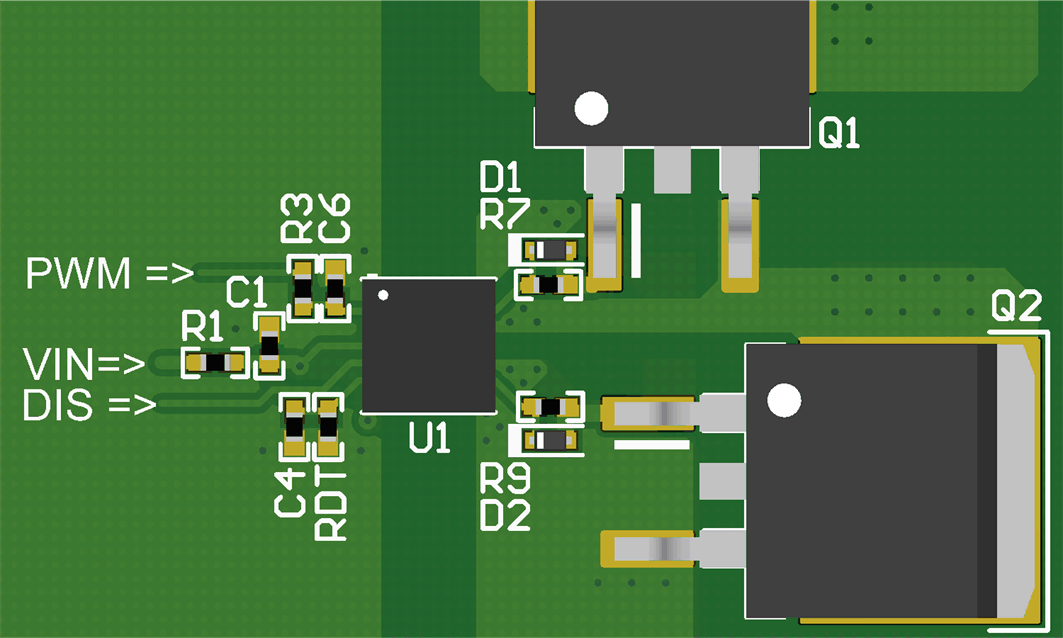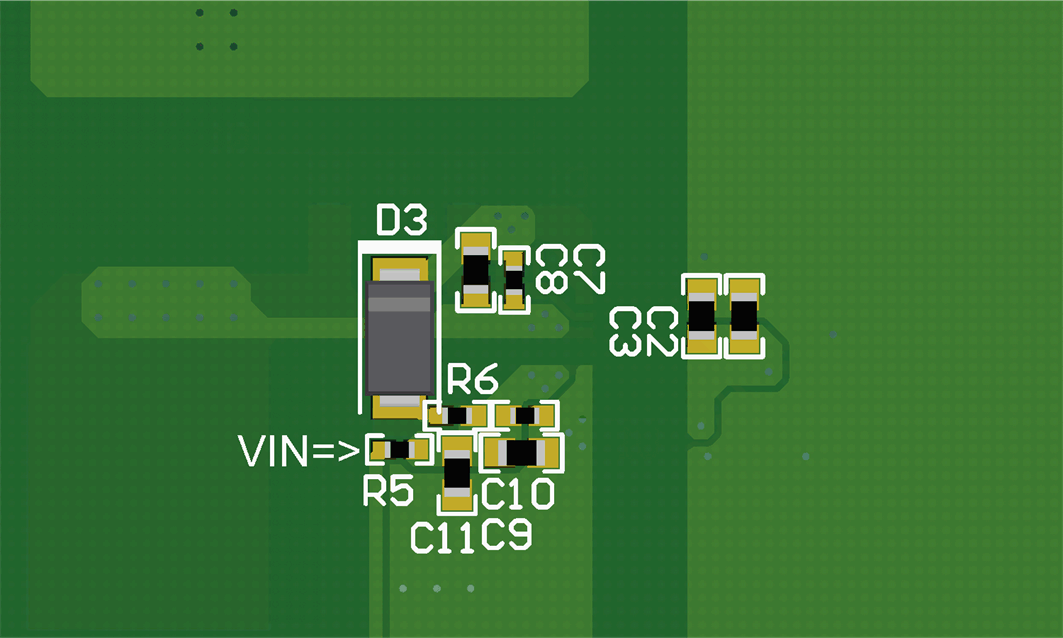JAJSGJ8C November 2018 – September 2019 UCC20225-Q1 , UCC20225A-Q1
PRODUCTION DATA.
- 1 特長
- 2 アプリケーション
- 3 概要
- 4 改訂履歴
- 5 概要(続き)
- 6 Pin Configuration and Functions
-
7 Specifications
- 7.1 Absolute Maximum Ratings
- 7.2 ESD Ratings
- 7.3 Recommended Operating Conditions
- 7.4 Thermal Information
- 7.5 Power Ratings
- 7.6 Insulation Specifications
- 7.7 Safety-Related Certifications
- 7.8 Safety Limiting Values
- 7.9 Electrical Characteristics
- 7.10 Switching Characteristics
- 7.11 Thermal Derating Curves
- 7.12 Typical Characteristics
- 8 Parameter Measurement Information
- 9 Detailed Description
-
10Application and Implementation
- 10.1 Application Information
- 10.2
Typical Application
- 10.2.1 Design Requirements
- 10.2.2
Detailed Design Procedure
- 10.2.2.1 Designing PWM Input Filter
- 10.2.2.2 Select External Bootstrap Diode and its Series Resistor
- 10.2.2.3 Gate Driver Output Resistor
- 10.2.2.4 Estimate Gate Driver Power Loss
- 10.2.2.5 Estimating Junction Temperature
- 10.2.2.6 Selecting VCCI, VDDA/B Capacitor
- 10.2.2.7 Dead Time Setting Guidelines
- 10.2.2.8 Application Circuits with Output Stage Negative Bias
- 10.2.3 Application Curves
- 11Power Supply Recommendations
- 12Layout
- 13デバイスおよびドキュメントのサポート
- 14メカニカル、パッケージ、および注文情報
12.2 Layout Example
Figure 43 shows a 2-layer PCB layout example with the signals and key components labeled.
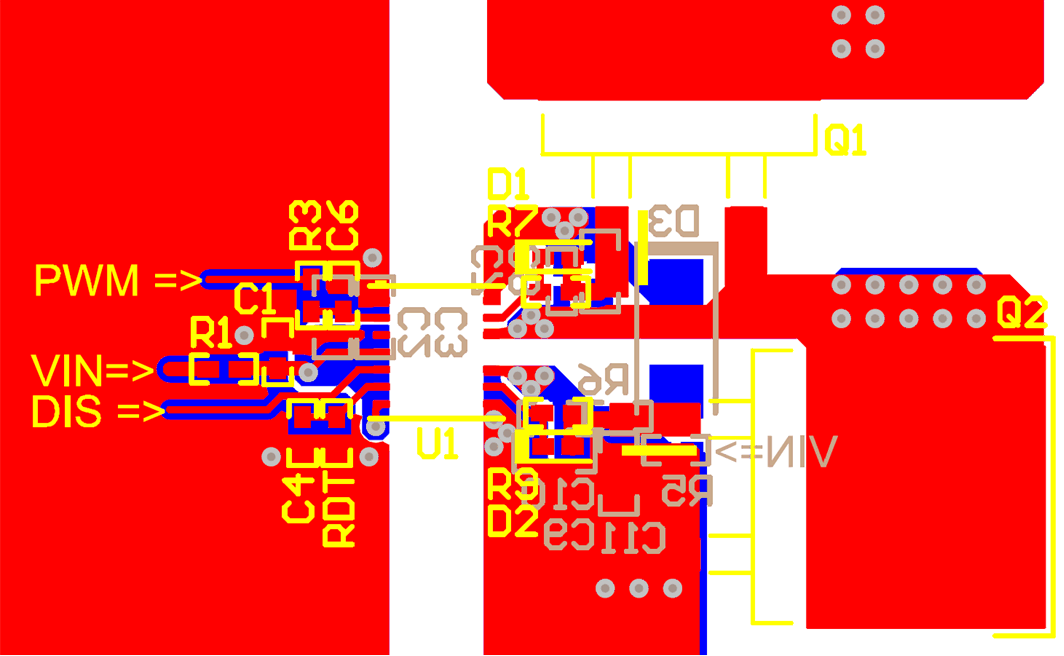 Figure 43. Layout Example
Figure 43. Layout Example Figure 44 and Figure 45 shows top and bottom layer traces and copper.
NOTE
There are no PCB traces or copper between the primary and secondary side, which ensures isolation performance.
PCB traces between the high-side and low-side gate drivers in the output stage are increased to maximize the creepage distance for high-voltage operation, which will also minimize cross-talk between the switching node VSSA (SW), where high dv/dt may exist, and the low-side gate drive due to the parasitic capacitance coupling.
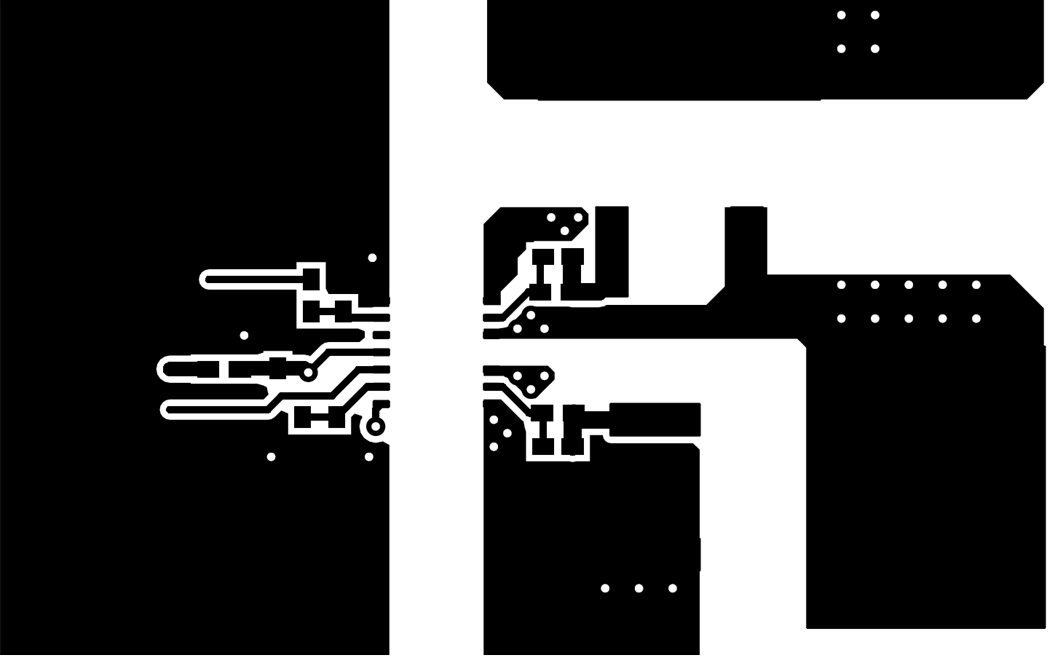
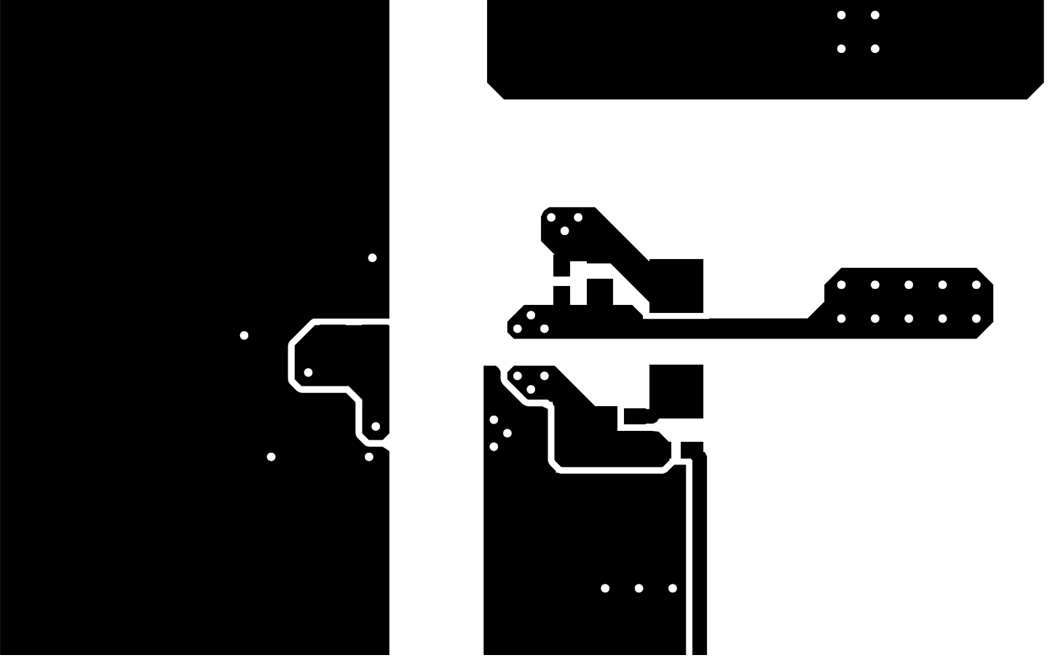
Figure 46 and Figure 47 are 3D layout pictures with top view and bottom views.
NOTE
The location of the PCB cutout between the primary side and secondary sides, which ensures isolation performance.
